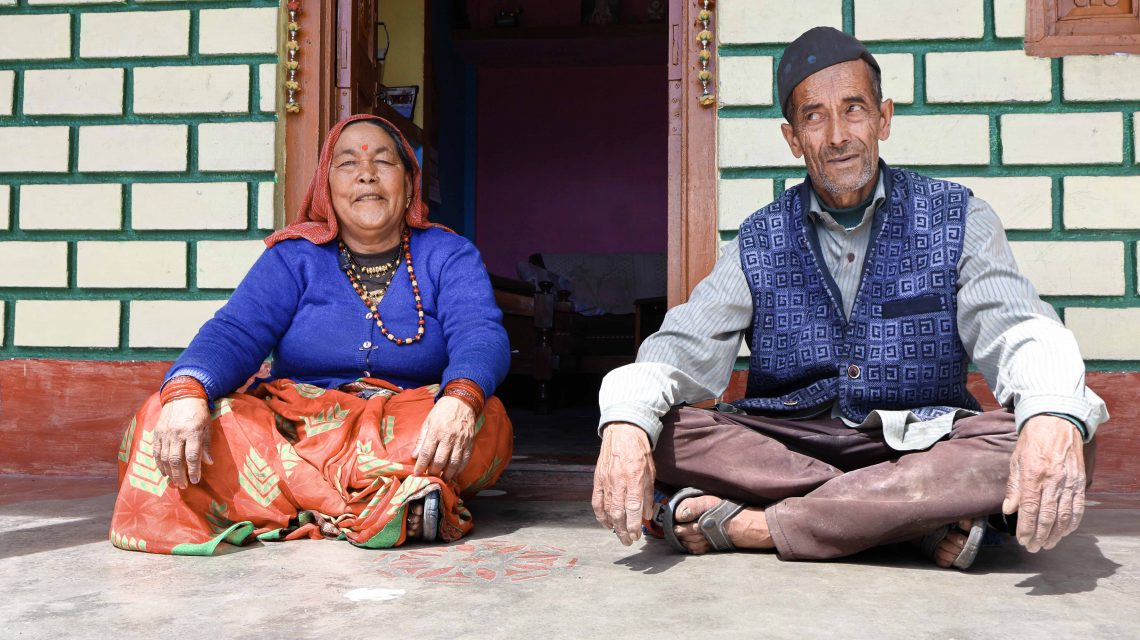
A Last Journey to Tibet – the Story of Chander Ram
Sixty odd years ago, as a young boy Chander Ram would undertake the long and arduous journey across high Himalayan passesthrough what was once a bustling trade route between India and Tibet. When the 1962 Indo-Chinese war broke out, Chander found himself behind enemy lines. Chander Ram shares memories of these journeys in vivid details and tells of his encounter with the Chinese soldiers and his escape with his horses and mules safely back to India. The story takes you to a time and world bygone, and how the war changed the lives and livelihoods of people who live at this
Himalayan frontier.
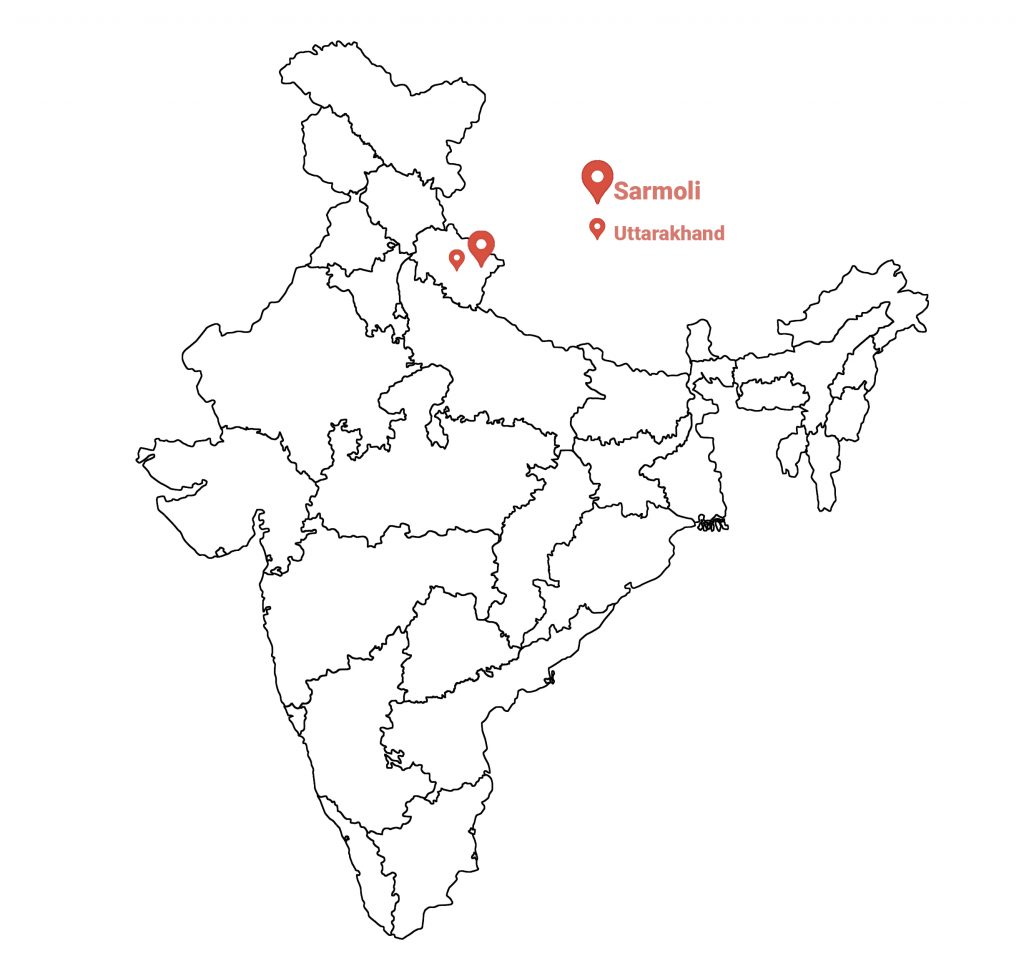
Storyteller- Beena Nitwal,
Fellow Himal Prakriti
Village Sarmoli, Munsiari, District Pithoragarh, Uttarakhand
Read this story in Hindi
I had heard that Chander Ram, a resident of the Sarmoli village, had been part of a long historic journey from across the Himalay in India to highlands of Tibet – for many years in his childhood! The vast mountain ranges of the Himalay stretch for about 2,500 kilometres from east to west, separating India from Tibet. The only way to cross them was through high passes, which are at elevations of 18,000 to 20,000 feet above the sea level. Today, trekkers and mountaineers traverse these very passes for adventure, but many years ago, they had been a small part of an arduous trade route- one that people from my Johar Valley frequently traversed!
The Johar Valley is an area in the high Himalaya of Pithoragarh district in Uttarakhand, which shares its borders with Tibet. India and Tibet have had a long history of trade relations in which people from India used to transport food, clothing, and other items to Tibet, and returned home with goods such as salt, Tibetan wool and sheep, chirpi (dried yak cheese) and wedding gifts from there.
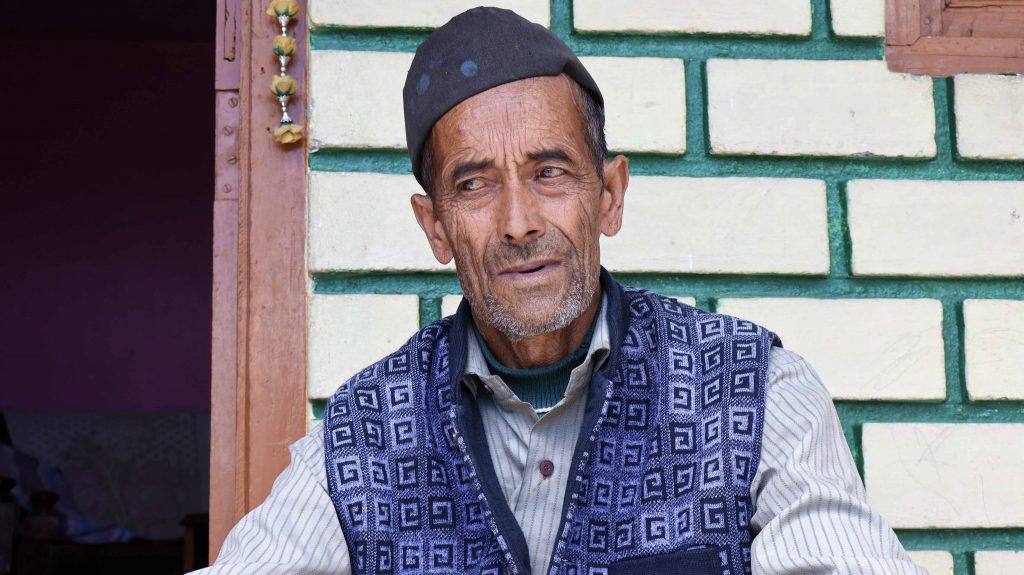
I was surprised to learn how, at such a young age, Chander Ram managed to travel to Tibet with traders by crossing high mountains and passes carrying goods on horses and mules. Interestingly, during the India-China war of 1962, Chander Ram was in Tibet. I was curious to know how, during the war, he managed to returned to his home safely, and also managed to bring back the sheep, goats, and horses with him.
To answer these questions, I decided to visit Chander Ram’s home and meet him!
Meet Chander Ram, now 76
Chander Ram’s house is in Sarmoli village, close to the Munsiari town situated across the valley from the snow-capped Panchachuli Range. He belongs to the Shilpkar (dalit) or artisan community. As I walked to his house, I noticed that despite it being the rainy season, that day, the sun had peeked out from behind the dark clouds, bringing a bit of warmth to the day. A stream ran near his house, and I could hear its steady rush. Chander Ram was sitting in the courtyard of his house.

I asked him, “I’ve heard many stories about India’s trade with Tibet, but the villagers told me that you were also involved in it when it took place. What was the trade like? Will you share your story with me?”
He happily agreed, and thus began his story.
Early memories
“When I first went to Tibet for trade, I was only 12 years old. Now, I am 76.” Chander Ram said.
“At that time, my father lived in Sai village near Munsiari. This village had about 90 families from the Bisht caste who were engaged in farming, and there were some Pandit families. Sai also housed approximately 80 Bhotiya families, known as Shauka, and they were the village’s traders. The Tolia families were also part of the Shauka people. My father was the blacksmith for all the Bisht families living in Sai. He used to make agricultural tools like hoes, spades, and ploughs, and also sharpened them to keep them in good order.

“He did not get paid for that work, he was only given one begaar rice (a unit of measure) for one meal, which he would bring home and share with everyone. That’s how transactions used to happen back then. The rest of the ration was given during the farming season. Every May-June, when the wheat was ready, he would receive a winnowing basket full of wheat. He would refill the same basket thrice and bring home that much amount of wheat. In October-November, the same was done for paddy as well. When the Bisht families dried their year-round harvest in their courtyard, it was called khaul. This grain was distributed to every family in the village in exchange for their services or other goods. Whenever food arrived at our home, we were so happy because we knew we would eat a full meal that day.”
Sai village is about 20 kilometres from Sarmoli, and just recently it has been connected by a motor. I found myself thinking, this must be the same Sai that is famed for its abundance and the saying, ‘Jol ni khain Sai, vul ni khain kain’ (if someone has not been able to feed themselves living in Sai, they won’t be capable of finding food or fend for themselves anywhere else).” And yet in this well-endowed village, Dalit families used to go to bed hungry.
“We used to call our employers ‘gusai.’ In our community, blacksmiths were known as lohar, bamboo weavers were called bajela, those who added leather to a portion of a karbach or saddlebag were known as chamar, and those who provided entertainment by signing songs were called hurkiya–hurikiyani. Our identity was closely tied to our work- horse handlers were called dyab, shepherds were known as anwal, and masons were known as ore. Anyone from the shilpkar caste could take on these work roles with animals.”

Tibet calling..
“Since childhood, I have had a slight frame and am short in stature. But I was very agile. I had a quick tongue and was even quicker in my work. Every year, the Shaukas of our village went to Tibet for trade with their sheep, goats, horses, and mules. My uncle, who was an anwal and tended to a herd of goats, also went with them. Anwals usually took care of the sheep and goats in the forests and sheared the sheep every six months. They would then spend the entire year in the forest, looking after and raising them,” Chander Ram said.
“My small house in Sai village had stone walls and a saalam or thatched grass roof. There were stones laid in the courtyard of my house. One evening, while we were playing in the courtyard with the other children from the village, Dayan Singh Tolia called out to me, ‘Hey chhoun (child), how long will you keep playing? Don’t you need food? Starting tomorrow, come and work with my horses and mules. We need to prepare the supplies, make different loads for these horses and mules to carry, and get ready for the trade trip to Tibet.”
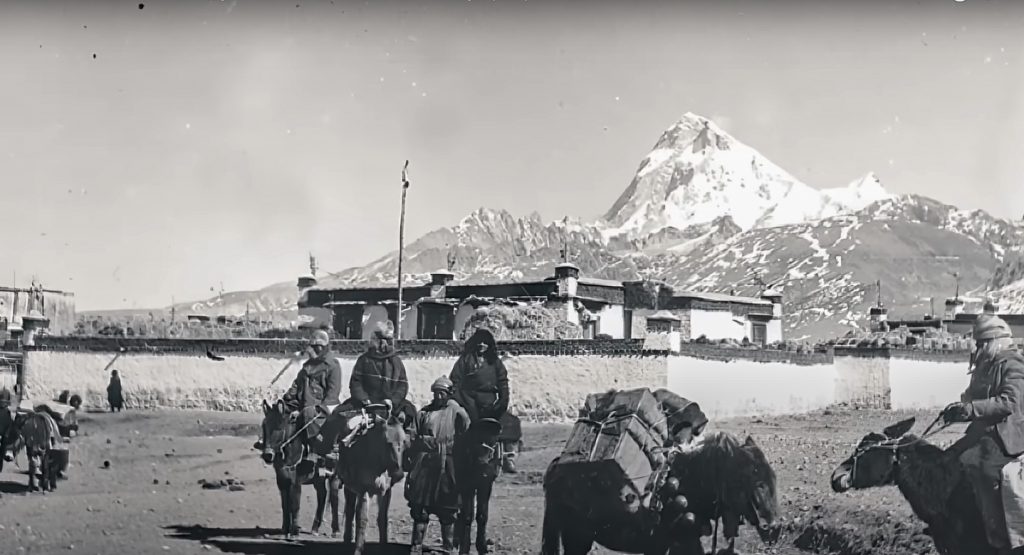
“The next day, I was ready to go with the horses and mules.”
My father said, ‘Take two horses from home as well, because they will also carry some goods.’
Preparation for the journey to Tibet
Chander Ram explained that these horses and mules were used year-round for transporting goods and they played a crucial role in trading. In the remote villages of Munsiari, most people were engaged in farming. The traders would travel to these villages, take grains from them and then bring back salt from villages in Tibet.
“Our job was simply to transport goods for the traders from here to there and vice versa,” he said.
“Before heading to Tibet, we would travel some 300 kilometres on foot along with 13 horses and mules from Munsiari at an altitude of 2200 meters, down to Haldwani located at 424 meters in the plains. From there, we would shop and load warm clothes, banad-bodam (thick fabrics), kalp mishri, tass mishri (sweetmeats), chuhara (dried dates), coconut, gwastab (a food delicacy), and other goods onto the horses and mules. By May, we would trek back to Munsiari and beyond up to malla (upper) Johar’s Tola village at 4500 meters. By June, my uncles would also prepare to head to Tibet with sheep and goats, loading them into a karbach (a saddlebag that could hold about 8-10 kilos of goods). All of this was just preparation before leaving for Tibet, the actual journey to Tibet would begin now.”

Johar Onwards
“My uncle and a few boys like me used to carry the goods of the Shauka merchants on horses, mules, sheep and goats, and we also carried some on our backs. Along with this, we would also carry our own food- Sattu, which was made from wheat and Madua (millet). Sattu was dry and lightweight, and we mixed it with water to eat when we felt hungry,” Chander Ram explained.
“When we moved beyond Johar, we crossed teen dhura or the 3 high Himalayan passes that led into Tibet,” he continued. He paused for a moment, lost in thought as he tried to recall the names of the dhuras. A few moments later, he began to softly whistle a melodious tune. Finally, he remembered and exclaimed, “Unta Dhura, Jaanti Dhura, and Kungdi Bingdi!”

“The mountains and peaks were very high, and there were no trees or plants. As I walked with my animals along the rocky and stony path, the horses ahead made a clattering sound, and it felt as if I was about to faint. There was no place to rest as well. I had heard from people that if you stopped to rest, a Chyagkowa (the Himalayan Chough) and the Ravan would come and pluck your eyes out. I didn’t stop at all out of fear. As we walked, it felt as though a light smoke rose from the ground, which gave me a feeling of intoxication. Then I remembered that this must be what people mean when they say that without trees and plants, the air feels like poison.”

“I had my face completely covered with a galaband (muffler), leaving only a small part of my eyes uncovered so I could see the path ahead. In that dhura, it was also not possible to move quickly. We continued to walk slowly, at our own pace. Every moment, we could feel the cold wind biting into our faces. My fingers were also getting cold, almost going numb. But we pushed on and managed to cross the three dhuras in this way. En route, we camped for a night at a place called Lapthal. The next day, we continued our journey with our horses and mules.”
“When we reached Tibet, there was the vast expanse of the high plateau stretching for miles ahead in every direction. The sun felt too close, almost as if it was shining directly overhead, and a very cold, strong wind was blowing, sending wave after wave of shivers throughout my body. It was so cold that if we spat, it would freeze in the air before it hit the ground. The cold made our lips crack and bleed. The place was almost ice-cold.”
“The woollen clothes we wore were very thick, and our bukhals and pajamas were also quite heavy. We didn’t have shoes or slippers, but we wore sek or legwarmers, which were made from old, torn karbach bags, worn-out sacks, and goat hides. These seks were sewn with a needle into high boot shapes that reached up to the knees. They provided protection from the wind and snow and kept our feet warm. Our gusais (traders) wore leather shoes called kortu. We used to haveonly one pair of clothes, the ones we would wear, so we had no extra clothes for changing. However, we carried a pankhi (a large woollen shawl) that proved to be very useful during rainfall, snowfall, and wind storms.”
Chander Ram explained that it easily took 5 to 6 days to travel from Johar to Tibet.
When in Tibet
“When we first saw the people of Tibet, they were dressed in long, black coats. Their homes seem to have been constructed by digging into the ground, like caves. The soil there was red and sticky. The people of Tibet were known as Hunnis or Lams.”
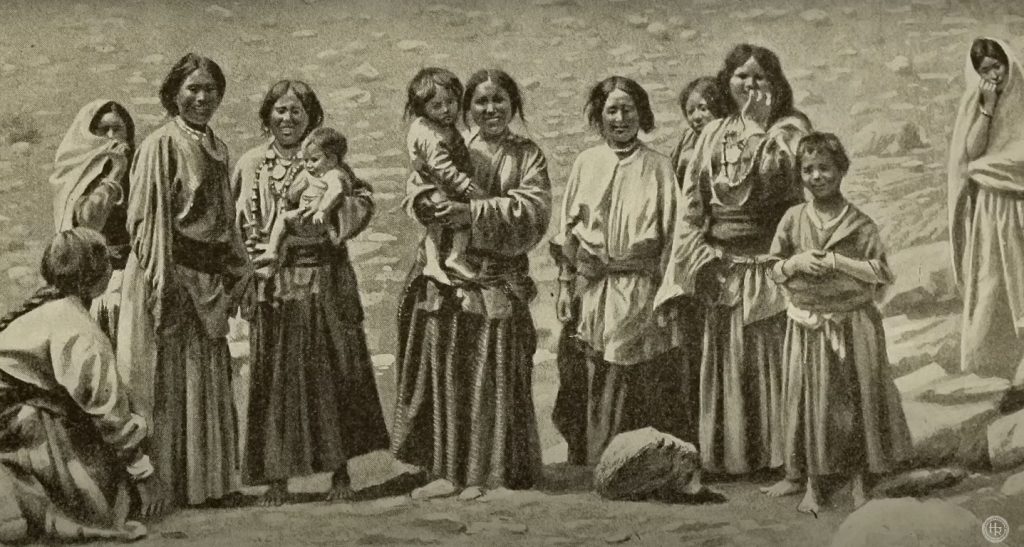
“It took us about 40-45 days to travel to and from Tibet as well as the time we stayed there. We didn’t stay in Tibet too long because after August 15, as soon as the weather changed in those mountains, snow would begin to fall heavily.”
He said that they would set up separate tents for the traders and ourselves, which they called chitpa. These tents were made from the thick hair of lakkhi goats (a big hairy breed), which did not let water or air through and managed to keep them warm. To set up the tents, they had to drive iron nails on all four sides of the tent into the ground and secure them. The wind was so strong that the tents would flap vigorously. Traders set up their shops inside these tents, with their Kalp Mishri, Taas Mishri, Chuhara, coconut, Gwastab, and other items.
“We would, in the meanwhile, take the horses and mules to graze in the distant plains. In the evening, we would bring back wood for cooking, which was difficult to find in these parched plains. There was a bush-like plant that spread on the ground, which we collected and used as fuel. For the horses, mules, sheep, and goats, we made a stone enclosure known as a khor. This is where the animals stayed through the night.”
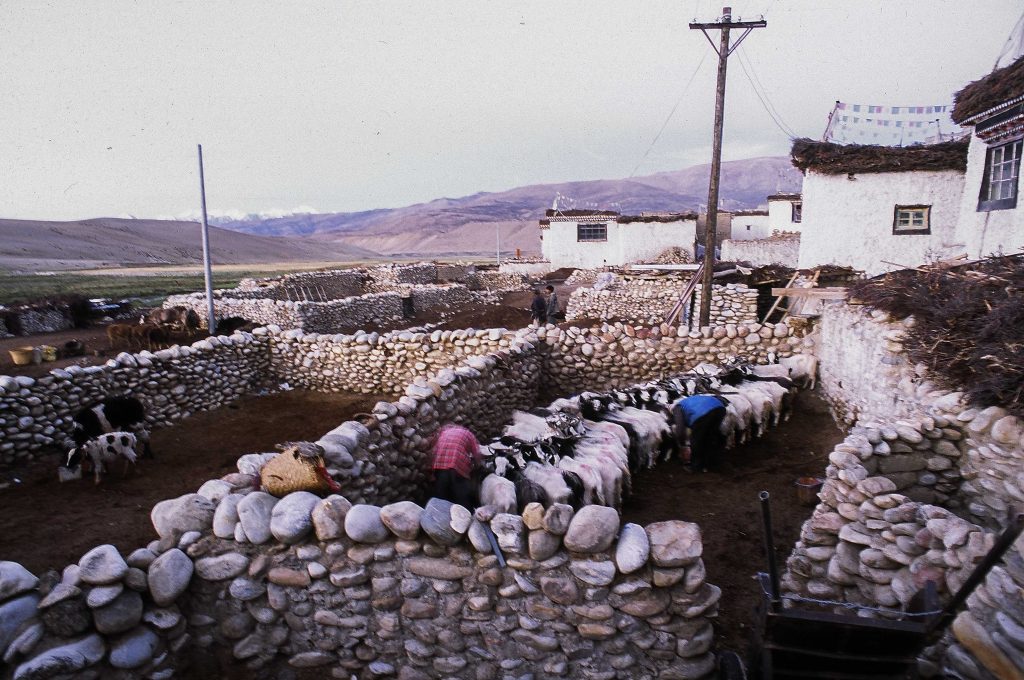
The Indo-China War
Chander Ram paused and took a deep breath. He said that for 3 years in the months of May and June, he had gone to Tibet. In the third year, when he was 14, he went again with the traders’ horses and mules. Upon arrival, they discovered that a war had broken out between China and India, and China had taken control of the Gyannim Mandi (Gyannim Trading Outpost) which was the largest market in Tibet.
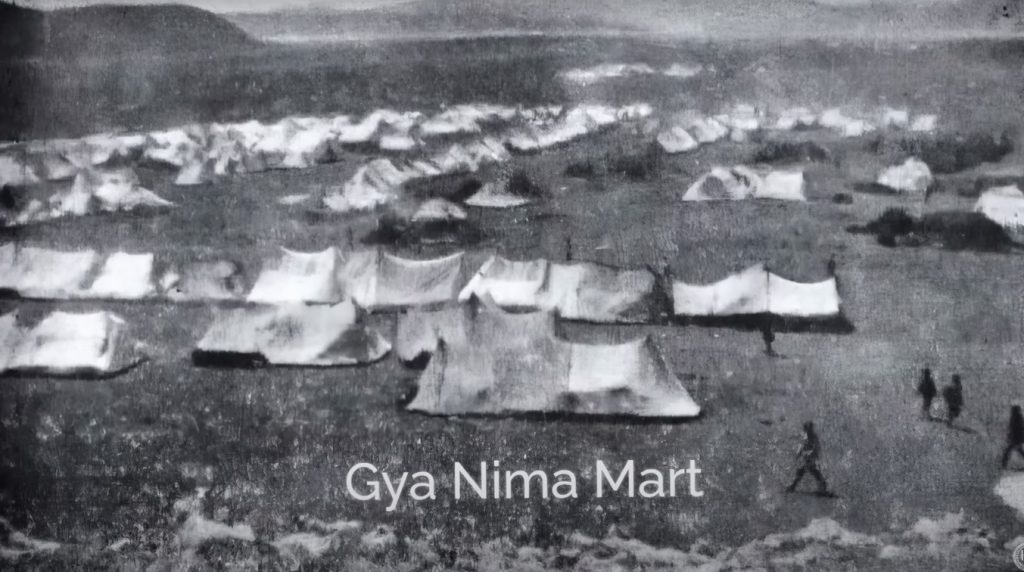
“As soon as we arrived at the Gyannim Mandi in Tibet, the locals warned us that Chinese soldiers might arrive at any moment. When I heard their warning, fear gripped my heart and it started beating very fast. After a while, we saw a large herd of white sheep and goats, tiny specks in the distance, running rapidly in our direction, making a loud thumping noise ‘bhid-bhid-bhid’. We suspected that the Chinese soldiers were making their way towards us. Everyone began to flee, leaving their goods behind. Six of us did not run. We saw some big traders and Tibetans talking to the Chinese soldiers. Then the Chinese soldiers started looting the traders’ goods and used sticks and whips to scare people away. I saw that they had whips made of leather with shuyush (metal balls) attached to them. I was trembling with fear, after all I was the youngest of the lot. The Hunni people helped us by gathering our horses and mules scattered across the expansive plains and getting them to safety. But all the goods had been looted. We had to sneak away empty-handed and we managed to reach our border in the cover of darkness of the night. The Hunni people were critical in helping us escape.”
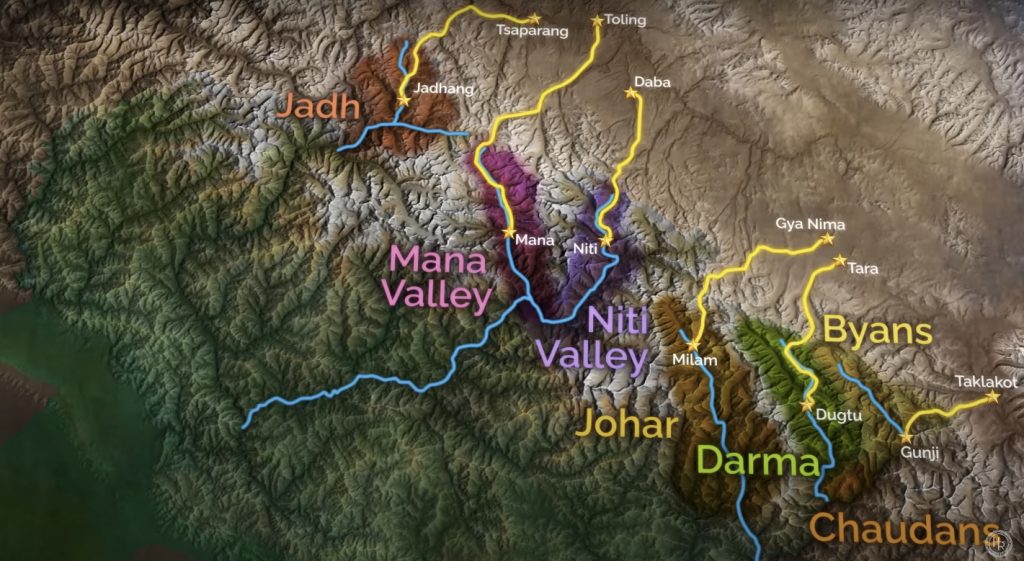
“We didn’t understand their language, so we communicated through gestures. The traders who we were with, fortunately could understand them. With great difficulty, we reached India and then our village in Johar. In our village, the news had already broken that the Chinese soldiers had driven Indian traders away. When I finally got home, my mother took me in her arms, which eased my fear a bit.”
When Trade Ended
After returning home, Chander Ram said he was worried about how he would continue to make a living during the war.Meanwhile, the trader Dayan Singh Tolia said that the trade with Tibet had come to a halt and he spoke to all the young people in the village about joining the army.

“The Tibetan border was very close to our villages, and orders began pouring in all the villages of Johar saying, ‘Vacate the villages or else how will you sustain yourselves?’ At that time, due to the ongoing war with China, the army needed young soldiers. Consequently, everyone was called to enlist in the army. Those who had been working as servants for the big Shauka traders, almost all of them went to enlist.”
The Shauka community of Johar Valley, on the other hand, were granted the Scheduled Tribe reservation in 1967.
“I also went to enlist, but due to my short stature, I was sent back home. I was assigned to transport supplies to the border with horses and mules. There, I witnessed how soldiers were digging the ground to create hiding places and firing their guns. I worked at the border for about six months, delivering rifles, ammunition, explosives, and food supplies. I had begun to miss my parents, so I came home for a few days.”
As we sat reminiscing about his past, Chander Ram’s wife, Haruli Devi, joined us.
Panting and almost out of breath, she said, “With age I have put on so much weight, and now I am starting to face some troubles with my knees while walking.”
With a deep sigh, she sat onto the chair next to Chander Ram.
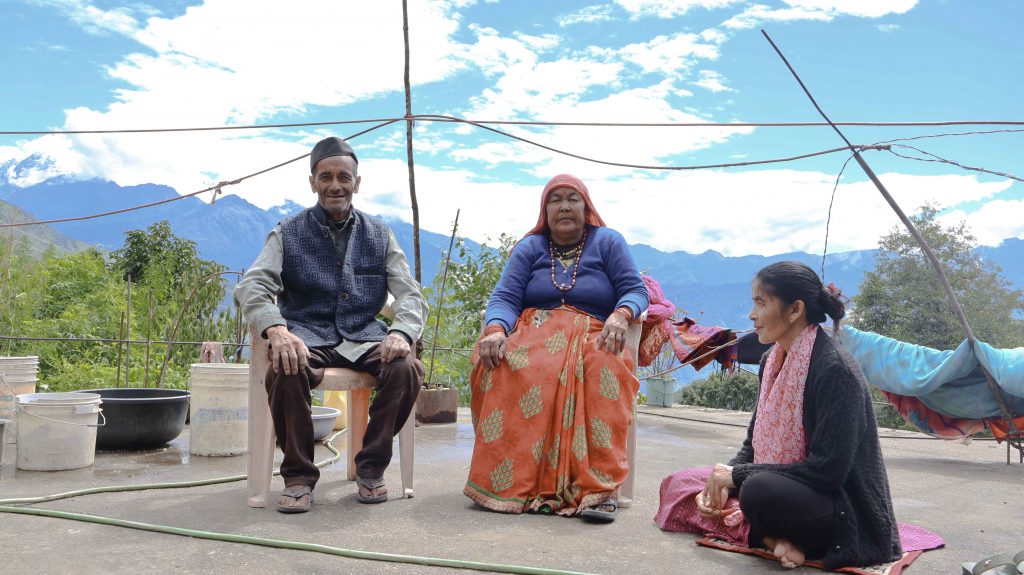
Chander Ram turned and smiled as he looked at Haruli, and recalled, “When I was 14, my family arranged my marriage to Haruli. It was in the month of January-February. She was also young at that time. I still remember that she wore a long, thin jhukol, which was like a frock, at the wedding. As soon as it started raining, she began to shiver from the cold, and a nice gentleman wrapped a pankhi (a woollen shawl) around her.”
After his wedding, Chander Ram continued working at the border until the end of the war.
Life today
“Post the war, I settled in Sai village near my home in Munsiari and began working as a blacksmith. In exchange for my blacksmithing work, I didn’t receive any money, and was given food instead. For household expenses, I collected medicinal herbs and sold them during the season. This is how I managed to educate my four children while living in the village.”
Chander Ram suddenly fell silent. Looking into the distance, he seemed to have drifted away into the world of his memories. It was almost evening and listening to his story had only deepened my curiosity. Yet, Chander Ram sat quietly, resting his hand on his cheek and moving his feet absentmindedly.
I couldn’t hold my curiosity any longer and I found myself asking him, “your story started in Sai village, so how did you end up living in Sarmoli?”
Chander Ram explained that a few years ago, the mountain slope on which Sai village was located had begun to sink and unravel. Though farming in Sai was very prosperous, the village itself was situated on a large rock. In 1998, due to heavy rainfall, there was a big landslide, causing a large part of the village to be buried. This incident happened during the night.
“When we realized that the land was shifting, we fled our homes to save our lives. The next day, we saw that some houses had been buried. And among them, my house was reduced to rubble. The loss made my heart ache painfully, but I had to tell myself, ‘the house is gone, but my family is safe.’ After that, I moved to Sarmoli village and built a new home here. I received some assistance through a government scheme and I constructed my home mostly from stone and tin.”

“Times have changed now and people do less farming. I make iron tools when I receive orders, and during the season, I sharpen the tools, for which I charge a fee. Despite my age, I still work to cover my expenses so that I don’t have to ask anyone for help. As long as my hands and feet work, I will keep working and not be a burden on others.”
It had started to rain now and darkness gathered in the sky. I started heading home, thinking about how this person is a witness to history and had endured so many changes in his lifetime. Even at this age he continues to work as a blacksmith in the village.
As he concluded his story, something he said kept echoing in my ears.
“Chhila diga!” he exclaimed with deep nostalgia, missing those days spent travelling to Tibet.
“I will never see such beautiful places again.”
Meet the storyteller





